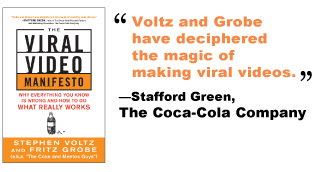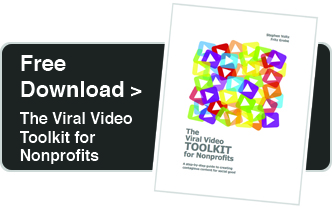by Fritz Grobe
A few days ago, I watched an online video that blew me away and I immediately wanted to share it with my friends. But I didn’t. How did it move so quickly from being a video I couldn’t wait to tell people about to being a video I didn’t share at all?
Here’s what happened.
On March 8, Justin Fox at Zen Garage, posted the following video with a short summary of the backstory:
Marina Abramovic and Ulay started an intense love story in the 70s, performing art out of the van they lived in. When they felt the relationship had run its course, they decided to walk the Great Wall of China, each from one end, meeting for one last big hug in the middle and never seeing each other again.
At her 2010 MoMa retrospective Marina performed ‘The Artist Is Present’ as part of the show, where she shared a minute of silence with each stranger who sat in front of her. Ulay arrived without her knowing and this is what happened.
On March 12, according to a follow-up post by Justin Fox on Spamventdocument.com, in just four days, 5.7 million people had seen the Zen Garage post on Facebook and almost 46,000 people had shared the link. Zen Garage saw a record 300,000 visitors to their web site in one day. And the video now has over 1.5 million views on YouTube.
When I first watched the video after a couple of my friends shared it on Facebook, it jumped out to me as an amazing example of how strong, positive emotion is a trigger for sharing (one of the key principles of The Viral Video Manifesto). There may be a reluctance to share a video that makes you cry — after all, is it nice to make your friends cry, too? But the overall impact here is positive — the swirling emotions of this unexpected reunion of two profoundly connected people is, ultimately, uplifting. That emotion will get people sharing.
Looking at the four rules for viral video, the video scores well: it’s relatively simple and raw (Be True), it’s not overly long (Don’t Waste My Time), the key moment is a great payoff (Be Unforgettable), and pure, unfiltered humanity is the centerpiece of the video (Ultimately, It’s All About Humanity).
So this is a video that was ready to go viral, and Zen Garage gave it just the right set up to get people sharing. I will admit that I am one of the people who teared up watching it, and I was about to share the video with my friends.
But I didn’t.
As I looked further into the story behind the video, I found, for me, a problem.
While the emotion is real, the setup here is… incomplete.
Looking to learn more about Abramovic and Ulay, I found an interview with the curator of the 2010 exhibit.
Apparently, the last time Abramovic and Ulay had seen each other was not, as the Zen Garage story makes you think, decades before. It was, in fact, earlier that same day. When asked when the two artists had seen each other most recently, the curator replied:
Marina and Ulay have been in contact sporadically over the years. This past summer, they saw each other for the first time in several years on the occasion of an interview. They met and talked the morning of the opening.
While they didn’t know if Ulay would sit and face Abramovic as part of the performance at the opening, Ulay was a guest of honor there. This was not the complete surprise encounter I thought it was.
So, the way I see it, the story on Zen Garage isn’t true. Discovering that break with Rule One: Be True meant that I wasn’t about to share the video. The artists’ emotion is still beautiful. The moment they share is still powerful. But, after learning the true story, I went from being ready to share to feeling misled. Even though the video is still, in so many ways, amazing, I didn’t want to spread a deception.
The feel-good post on Zen Garage will continue to spread, and it may continue to spread faster than the word that it is misleading. Longterm, will that be good for Zen Garage? Will the surge in traffic be worth a certain level of mistrust?
Looking through the comments on Zen Garage, you can see how many people love this video. And for those who learn the truth, you can see a range of disappointment:
“Wow, that’s sooo not as cool then. I took this as the article suggested-that this was the first time they’d seen each other in decades. Darn.” – Rachel
“It’s a little annoying when folks misrepresent.” – Ruth
“well that’s a big lie.” – David
“I saw this post on Zen Garage and could not share.” – Visions of Arcadia
What was your reaction? Were you ready to share the video after watching it? And are you going to share it now? Where do you draw this line?
This is how fragile the truth can be. And this is how fragile the contagiousness of a video can be. One slight difference, even in how the video is presented, can stop someone from sharing a video. I saw, in myself, the switch get thrown from, “I have to tell my friends about this!” to “What video should I watch next?”
When you create and post your own videos, be aware of just how quickly and easily the contagiousness can be destroyed.




